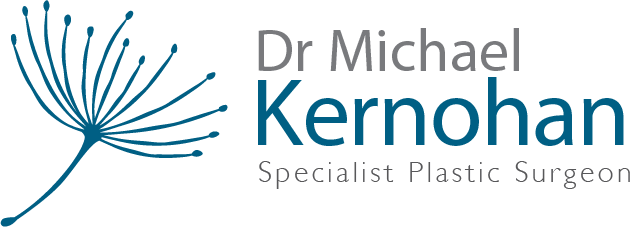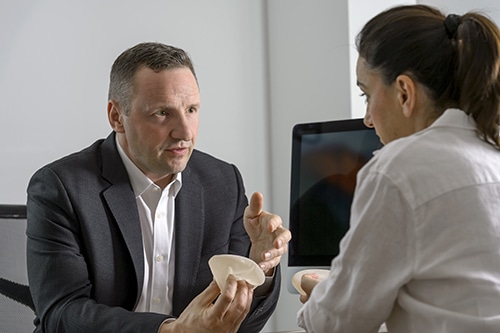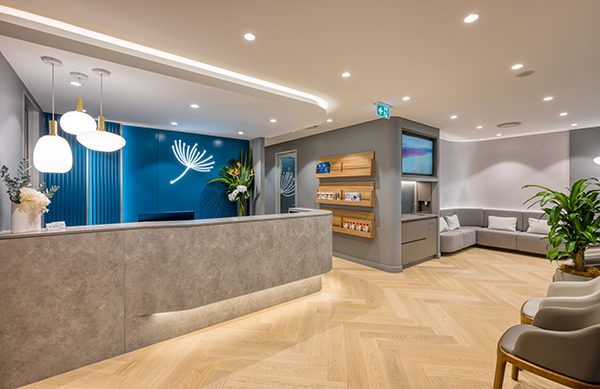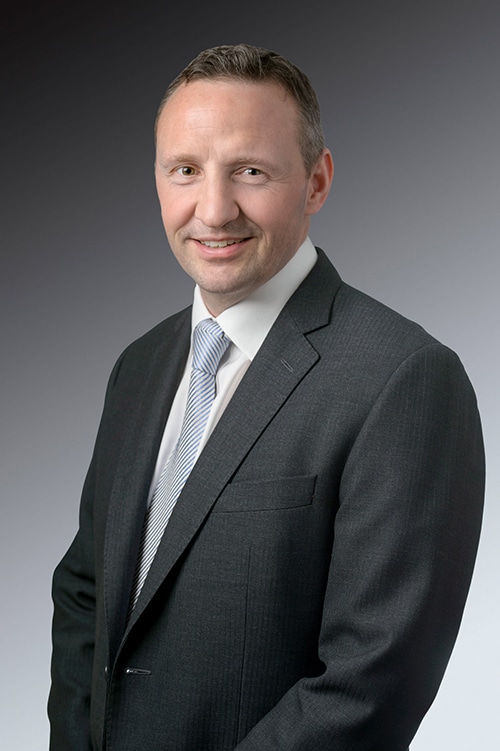Breast Reduction Surgery in Sydney with Dr Kernohan
- Do heavy breasts cause back, neck and shoulders pain?
- Do they restrict your activity and lifestyle?
- Do you suffer from rashes or skin irritation under your breasts?
- Is it difficult to perform simple tasks because of the size of the breasts?
These painful symptoms can cause restrictions in day-to-day activities. Large and heavy breasts can also make exercise and sport more difficult. Some women have difficulty with their large breasts, especially if they are out of proportion with their overall figure. Breast Reduction surgery may help alleviate these symptoms.
If you are thinking about reduction surgery, it is important to know what the surgery involves, the recovery time, what potential benefits it brings and what risks there are. Breast surgery is performed in Southwestern Sydney by Dr Michael Kernohan Specialist Plastic Surgeon.
This breast surgery can be performed for more than purely cosmetic purposes. If your procedure is performed for medical reasons Medicare and Private Health insurance may help ease your cost of surgery.
Breast Reduction Before and After
View the full breast reduction gallery here
Why have a breast reduction surgery?
A breast reduction surgery may help overcome symptoms of overly large breasts including:
- Aches and pain in the back, neck, shoulder and breast
- Indentations in the shoulders caused by bra straps
- Inflamed or reddened skin under the breast
- Rashes and skin irritation
- Difficulty finding a suitable bra that fits and supports the breast correctly
- Difficulty undertaking exercise due to pain and discomfort caused by the movement of their heavy breasts
A reduction surgery may help alleviate these symptoms if large breasts are the main cause. Please be aware back pain may be due to other causes.
Download Dr Michael Kernohan’s breast reduction surgery guide
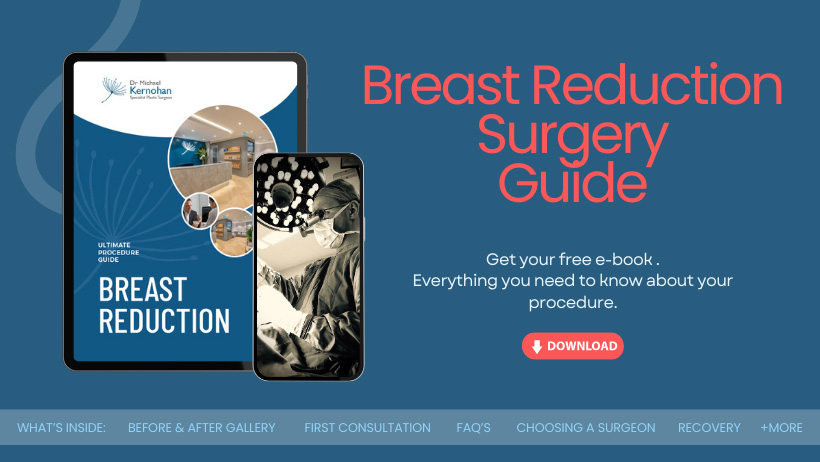
Your consultation with Dr Kernohan
Dr Kernohan is available for consultation in locations across Southwest Sydney. He will listen to your concerns and explain your options.
Expect Dr Kernohan to ask you about your general health, what symptoms you suffer from and what concerns you have about the size and shape of your bust. He will need to examine your bust and your overall figure to assess your proportions.
If, after careful assessment, you are suitable for breast reduction surgery expect to discuss the type of surgery, principles of the operation, likely outcomes and potential risks of surgery.
You may have more than one consultation. It is difficult to take on board all the information at just one consultation, and it is important that you have time to think about the information you have heard and have a chance to ask any questions.
Key points to discuss include:
- Your expectations and the expected outcomes of surgery
- Your medical history and any past surgery
- The potential benefits of the surgery
- The potential risks and complications
- Any family history of breast cancer.
- Any risks, complications or limitations – please see below
Please ensure your consultation is with an accredited Specialist Plastic Surgeon who is registered with AHPRA and who has experience performing reductions.
Before your surgery
Patients will be assessed by the anaesthetic team before surgery. This assessment may include:
- Assessing your general health and fitness before surgery by carrying out various tests and investigations.
- These may include blood tests and if indicated an ECG (electrocardiogram – heart tracing) and chest x-ray.
- Photographs will provide a record for your notes to allow a comparison of your breasts before and after surgery.
- Discuss your current medication, any allergies you may have and information on your planned treatment and hospital services.
It is important that you are satisfied you’ve been given all the information you need and that you fully understand the risks and potential benefits of your surgery before you sign your consent form.
On the day of the surgery, Dr Kernohan will make careful drawings on your breasts and upper body to define exactly what breast tissue is to be removed and the new position of the nipple and areola (the brown area around the nipple).
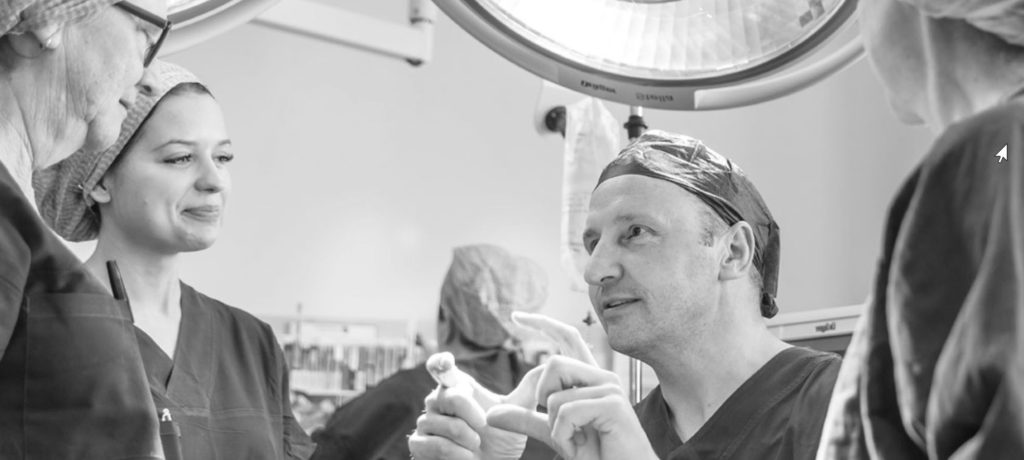
The Breast Reduction procedure
The Breast Reduction operation usually takes two to three hours to complete. It is performed under general anaesthetic in an accredited private hospital.
Dr Kernohan will use the marks made before your operation as a guide in excising blocks of skin, fat and breast tissue.
Usually the blood supply to the nipple and areola is preserved on a stalk of tissue (a ‘pedicle’) so it can be moved into its new position higher on the chest wall. If the breast is long the nipple may be removed completely and replaced as a ‘graft’, although this is quite uncommon. The nipple then has to take up its blood supply again from the underlying breast tissue and dermis.
The breast tissue and skin are stitched together, usually with dissolvable stitches. The resulting scars are typically around the areola and a vertical scar down from the bottom of the areola to the crease under the breast. Sometimes a further horizontal scar in the crease is made, depending on the amount of skin being removed – this can be short or long. (see diagram below)
Listen to the common reasons women have breast reduction surgery
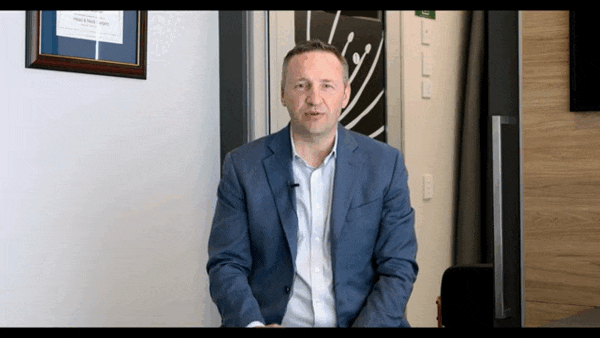
Breast Reduction Surgical Incision and Scar Minimisation
Techniques for breast reduction vary with an incision pattern that is either the Wise pattern (an anchor shape) or the more modern Vertical Scar Pattern (a lollipop shape) preferred by Dr Kernohan.
The most common procedure involves a keyhole-shaped incision that circles the areola, extends downwards and follows the natural curve of the crease beneath the breast (see diagram below).
The excess glandular tissue, fat and skin is removed and the nipple and areola are moved into their new position. The skin will be brought down from both sides of the breast and around the areola, shaping the curve of your breast.
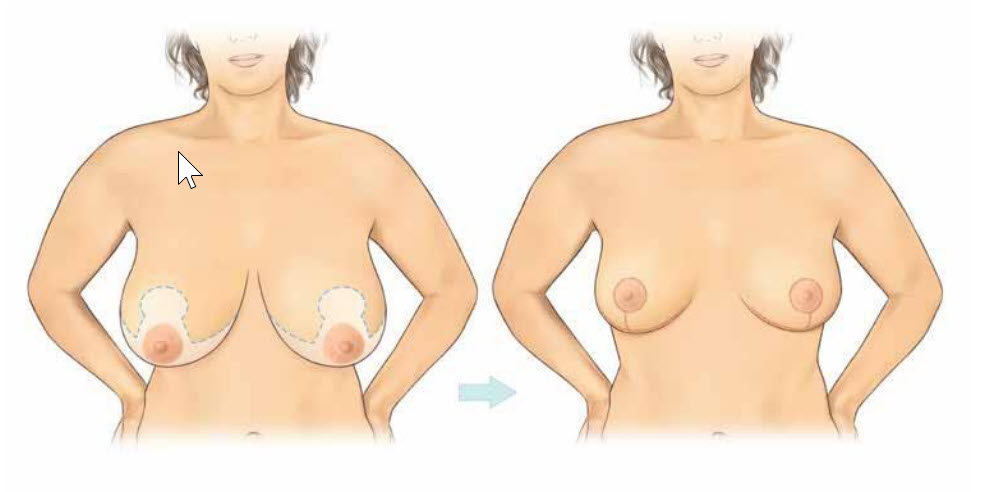
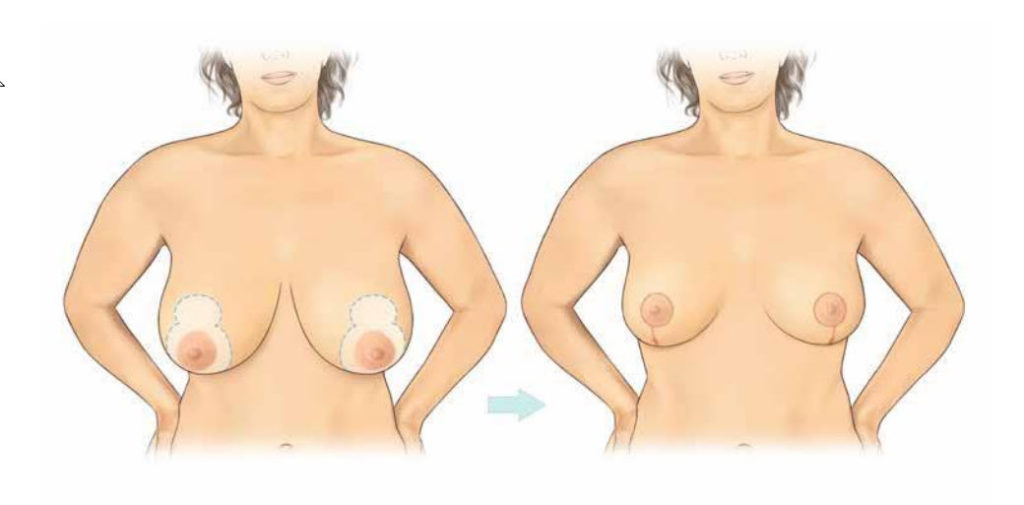
Recovery after Breast Reduction Surgery
Most patients will be awake within half an hour of the operation finishing. You will be given a variety of medication tailored to you by the anaesthetist to manage any pain. It is likely you will be ready to go home the next day however your surgeon may opt to keep you for longer for observation. Expect to have quiet time at home for the first week with no heavy lifting or strenuous work.
When do I return to the hospital or rooms for a follow-up appointment?
When you are discharged from hospital you will be given an appointment to be seen by Dr Kernohan or nurse. If you are worried or have concerns, just call. We would rather know if you are worried about something and can organise to see you if necessary. Outside of the times when the rooms are open – if you can’t get in touch with us and you are worried, then your local emergency department can help. This is very rare and is a backup plan rather than something to expect.
Post-op Visits – 7 to 10 days later
You will need to see your surgical team 7-10 days after surgery, and you should ensure you are able to see them regularly for the first few weeks, as it is common to need some regular dressings on the wounds during this time. Once all the wounds are healed it is likely the surgeon will want to see you at about three to six months after your surgery.
What should I do when I am at home recovering?
Following your operation you should be able to return to most of your normal activities within two to four weeks, although this will vary from person to person.
Light recreational activities such as walking and light exercise can usually be started after two to three weeks, gradually building up to more strenuous workouts after four to six weeks.
When can I exercise after surgery?
Most gentle exercise be resumed after two weeks. If the exercise involves strenuous upper body movements – for example aerobics, running, golf, swimming and any racquet sports – then it is advisable not to return to these activities until about a month after surgery. It is essential to wear a good quality sports bra to maintain the results of the surgery.
How long will it take for the results to settle?
It will take between 3-6 months if not longer for scar tissue in the breasts to soften and at first the scars may feel lumpy and tender. When you are at home after surgery, it is important to check your wounds. If they become red, swollen and painful, or if there is a discharge, please contact Dr Kernohan or local hospital if you are concerned.
How long will I be off work after Reduction Surgery?
It is likely you will need two to three weeks off work, and during the first two weeks you will need help with shopping, housework and care of small children and pets. You will not be able to drive for at least the first week, and possibly into the second, and then only for short journeys.
While the breasts and chest will be uncomfortable you should not be in extreme pain. An elasticated bra with no under-wiring, such as a sports bra, may help relieve discomfort.
You should be able to return to work after two to three weeks depending upon how strenuous your work is.
Breast reduction is a big operation and when returning to work it is common to feel tired. This can continue for up to three months. The initial swelling of the breasts after the operation usually dissipates within three months. This allows the initial high position of the breast on the chest to settle into the new position.

FAQ’s
Further Reading and Medical References
• Medicare page for Breast Reduction Item Number
• ASPS page on Breast Reduction
• NCBI reference on Breast Reduction
